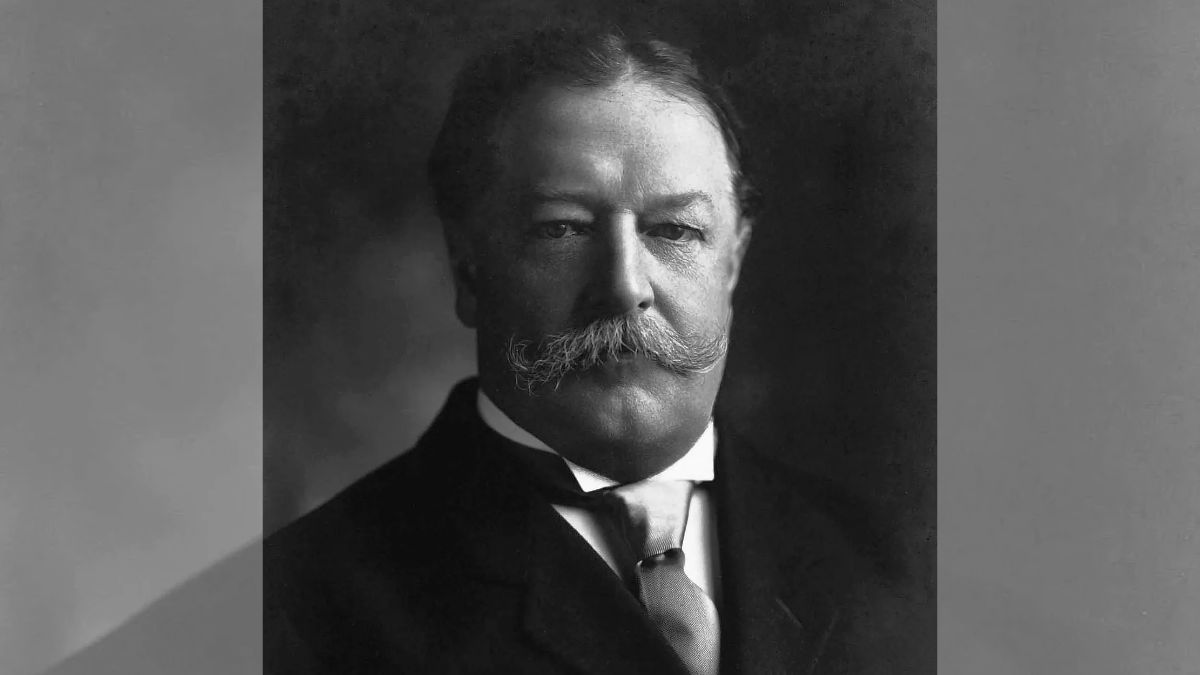William Howard Taft’s entry into politics came through judicial appointments. Until date, he remains the only person to have served as both US President and Chief Justice of the Supreme Court. Let’s take a closer look at the 27th President of the United States read more
)
William Howard Taft remains the only person to have served as both President of the United States and Chief Justice of the Supreme Court. Image courtesy: Whitehouse.gov
Editor’s Note: This profile is part of a series taking a closer look at US presidents ahead of the 2024 presidential election between Donald Trump and Kamala Harris.
Even among the rare breed that is US presidents, William Howard Taft remains one of a kind. He is the only man to have served as both US president and Chief Justice of the Supreme Court – in that order.
It is a distinction likely never to be achieved again by any man or woman.
Let’s take a look at the 27th President of the United States.
Early years
Taft was born on September 15, 1857 in Ohio’s Cincinnati to Alphonso and Louisa Taft. His father Alphonso was a judge who was President Ulysses S Grant’s secretary of war and attorney general.
Taft studied at Yale, returned to Ohio and went to law school. In 1880, he was admitted to the Ohio bar.
Politics
Taft’s introduction to politics came via judicial appointments. In 1887, he was chosen to fulfil the term of a judge in the Ohio superior court. He also served in the United States Sixth Circuit Court of Appeals. Taft later wrote, in jest, that he was chosen to serve regularly because his “plate was the right side up when offices were falling.”
Though Taft’s lifelong ambition was to be a United States Supreme Court judge, his wife Helen Herron Taft had other plans. In 1900, Taft accepted an appointment from president William McKinley to serve as chair of the Second Philippine Commission.
Taft, who was to grow fond of the Filipino people, performed yeoman’s service and grew popular with the public. By 1901, he would serve as the Philippines’ first civilian governor.
Taft even twice turned down then president Theodore Roosevelt’s offer to make him a Supreme Court justice. Instead, he agreed to serve as Roosevelt’s Secretary of War. Roosevelt and Taft became great friends and grew to trust each other. So much so that when Roosevelt decided not to run for re-election, he decided that he would back Taft as his successor. The Republican Party bosses agreed and handed Taft the nomination in 1908.
Taft was not a natural politician, complaining that campaigning for president was “one of the most uncomfortable four months of my life.” Taft beat his Democratic opponent William Jennings Bryan by a handy margin – 321 Electoral Votes to 162 Electoral Votes.
Time in office
Though Taft’s election pleased progressives in the party who claimed “Roosevelt has cut enough hay” and “Taft is the man to put it into the barn,” his time in office would prove to be less than satisfactory.
Though he had campaigned on lowering tariffs, he immediately signed the Payne-Aldrich Act – a protectionist measure. When Taft called the act “the best bill that the party has ever passed” the rupture was nearly permanent.
But Taft would further rub salt in the wounds by backing the Secretary of the Interior’s plan to sell public land in Alaska and the Rocky Mountains. He then fired forestry bureau head Gifford Pinchot — ironically a close friend of Roosevelt.
Taft also signed into law two important amendments to the US Constitution – the sixteenth amendment which created a federal income tax and the seventeenth amendment which made senators electable directly by the public.
By 1912, Roosevelt and Taft were clearly at odds. The former president decided to run for the highest office once again. Though the Republican primary results showed the voters wanted Roosevelt, the party bosses decided to renominate Taft.
Roosevelt left the Republican Party to form the Progressive Party, also known as the Bull Moose party. Divided against itself, the Republican Party could not hold onto the presidency. Democrat Woodrow Wilson easily won the presidency with 435 Electoral Votes. Roosevelt, with 88 Votes, came in second.
Taft received just eight Electoral Votes. No incumbent would ever fare worse. After exiting the presidency, Taft became a professor of law at Yale.
Afterwards, he was appointed Chief Justice of the United States by President Warren G Harding. Taft would serve in the position till nearly the end of his life in 1930.
“I don’t remember that I ever was president,” Taft wrote of his time in office.
Legacy
Taft could not measure up to his predecessor. Though he was by all accounts a good man, he was not a natural leader of men or a talented politician.
Arthur Link, the famed biographer of Woodrow Wilson, described Taft’s time in the Oval Office as an unmitigated “disaster.” Most historians agree.

 1 month ago
9
1 month ago
9
)
)
)
)
)
)
)
)
)
)
)
)
)
)
)
)
)
)
)
)
)
)
)
)
)
 English (US) ·
English (US) ·